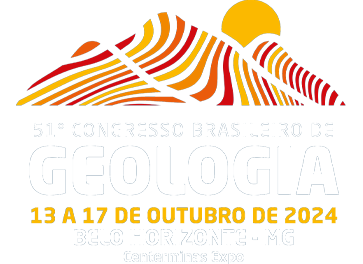Dados da Submissão
Título
DISCOVERIES AND POTENTIAL FOR TITANITE PETROCHRONOLOGY: POLYMETAMORPHISM REVEALED IN TITANITE, APATITE, AND ZIRCON FROM CALC-SILICATE ROCKS IN DOM FELICIANO BELT, DATING BACK FROM 638 TO 565 MA.
Texto do resumo
Titanite is essential in dating metamorphic events within calc-silicate rocks, shedding light on orogenic belt evolution by potentially recording various metamorphic stages. Although widely utilized in petrochronology, the interpretation of ages and temperatures derived from titanite remains a subject of debate. This study presents an integrated investigation of U-Pb dating in titanite, apatite, and zircon, alongside thermometry using Zr-in-titanite, within the calc-silicate rocks of the Passo Feio Complex, located in the central portion of the Dom Feliciano Belt. The primary aim of the study was to examine how different metamorphic events affect the chemical composition and U-Pb isotopic ratios in titanite grains. The Passo Feio Complex exhibits evidence of regional, contact, and hydrothermal metamorphism, with the latter two being triggered by the intrusion of the Caçapava do Sul Granitic Complex (CSGC; 582 - 562 Ma). U-Pb isotopic dating of several titanite grains from a K-feldspar-diopside schist unveiled three titanite populations separated by different ages. The oldest population, dated at 638.6±2.8 Ma (2s; n=19), was linked to the regional metamorphism event (M1), likely triggered by the main collisional episode of the Dom Feliciano Belt. The second population showed an age of 596.3±1.1 Ma (2s; n=91). Considering the occurrence of high-K magmatism and a carbonatite intrusion in the study region, which yielded zircon U-Pb ages of ca. 600 Ma, this population was interpreted as linked to contact metamorphism (M2), induced by interaction with these igneous intrusions. The youngest titanite population exhibited an age of 565.7±3.0 Ma (2s; n=6), which agrees, within analytical uncertainty, with the age of 561.4±1.3 Ma (2s; n=46) determined by U-Pb dating on apatite grains from a diopside-phlogopite schist. These younger ages recorded in both titanite and apatite are attributed to modifications caused due tointeractions with hydrothermal fluids (M3) during the cooling of the CSGC. Chemical analyses using an electron microprobe measured the concentrations of Zr in fifty titanite grains, which were examined in both bright and dark zones observed in back-scattered electron (BSE) images. The average temperatures recorded were 693 °C in the light zones and 690 °C in the dark zones of the titanites. Additionally, titanites exhibit higher (Al+Fe3+) content than fluorine, along with Ti being replaced by (Al+Fe3+). In light regions, there is a positive correlation between (Al+Ti) and Zr, whereas it is negative in dark regions. Furthermore, iron shows a negative correlation with (Ti+Ca) in light areas but a positive correlation in dark regions. We find that titanite holds the capability to document various events within a metamorphic complex. However, temperatures estimated via the Zr content in titanite may not align with U-Pb ages. Thus, integrating ages from titanite with those from other accessory minerals like zircon and apatite together with microstructural analysis can offer a more comprehensive insight into the evolution of orogenic belts.
Palavras Chave
titanite; zircon; apatite; geochronology; petrochronology
Área
TEMA 18 - Geocronologia e Geoquímica Isotópica
Autores/Proponentes
Daniel Rosa Madruga, Marcus Vinicius Dorneles Remus, Guilherme Sonntag Hoerlle, Ariela Oliveira Mazoz, Cristiano Carvalho Lana, Norberto Dani
